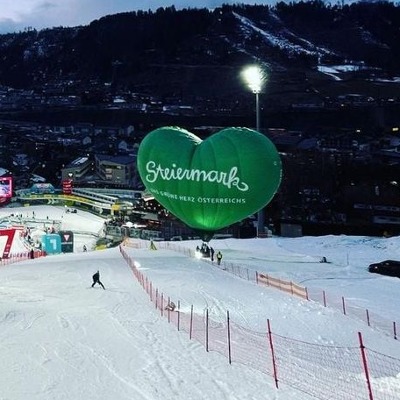Pistenbully Snowsat: Three Points Ahead!

SNOWsat offers enormous advantages for park building thanks to the well-thought-out 3-point blade measurement with the unique 12 potential movements of the blade.
Most grooming work is effected at "standard speed": 9 - 12 km/h corresponding to 2 - 3 m/s. Up to now, snow depth has been measured with high accuracy under the driver's cab. The short distance between the cockpit and the blade is not relevant for this work. For precise tasks at slow speed, however, 3-point blade measurement is very helpful. Because the blade, which significantly influences snow depth in the grooming process, is located around 1.5 metres in front of the vehicle. With snow depth measurement on the blade, you are measuring right where the action is.
The new optional tool automatically calculates snow depth at three points directly under the blade, providing a very clear display of these figures on the screen. This makes lots of tasks easier: backblading a kicker, for example, allowing it to be prepared exactly like the computer-planned 3D model. Or reproducing Ski World Cup slopes or fun parks following the surface model. Even a hiking trail, which is collapsing on one side - supported by a stone wall whenever possible - can become a genuine challenge though. When it comes to clearing, the blade can very quickly become caught on the wall, or you have a situation where there is still plenty of snow on one side, while the surface is already poor on the other.
Blade measurement supports and captures three degrees of freedom - lifting/lowering, tilting to the side and tipping forwards of the blade. The function of tipping, which is unique in the market, offers major advantages in the park - when shifting large volumes of snow and for precise construction of features. This function facilitates more movements, allowing drivers to react with utmost sensitivity and making the results more precise.
The driver's main focus is still on steering the PistenBully and controlling the blade and tiller. The displays on the screen should support rather than distract. The extremely user-friendly display also shows the blade and snow depth (in addition to the three numeric values) using graphics and colours. With just a quick glance drivers can immediately see if they're entering a red area with low snow depth.
Kässbohrer has developed all these innovations of the 3-point blade measurement through the tried-and-tested close collaboration with customers. The firm has listened and taken the time, which is why it's now able to convince customers with an optimum product.













